The revindication of Françoise Gilot, the woman who got fed up with Pablo Picasso
She and the painter were a couple for 10 years and had two children together, Paloma and Claude. After 70 years, France is now beginning to revisit the work of an artist
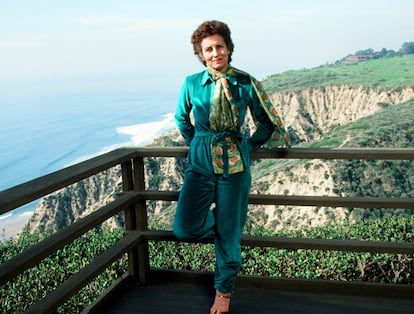
“I never heard anyone say no to Picasso. In fact, he called me ‘the woman who says no,’ because when I had to say no, I said it,” painter Françoise Gilot summarized her 10-year-relationship with Pablo Picasso, the man with whom she had two children, Paloma and Claude. But then she decided to leave him to avoid being consumed by the great artist. She was the only woman who could tolerate living with the Spanish artist once he was recognized for his work and talent. Now approaching her 102nd birthday, Gilot is far removed from that world; she lives in New York now. From the perspective of old age, she can discreetly reflect on the fact that her work is finally starting to receive recognition in Europe, particularly her native France, her country, which had marginalized her until only recently.
Everyone know what she looks like: features like her long neck, the mole on her cheek and her penetrating gaze are featured in Picasso’s female portraits. She was luckier than some of his other subjects and did not go down in history as Woman Weeping, the title under which the Spanish artist portrayed Dora Maar. Perhaps that is why the elites of the French painting world have been less kind to Gilot than they have been to Dora Maar. By virtue of her own career as well as her status as Picasso’s muse, Maar is a leading figure in French surrealism and has been the subject of numerous exhibits. But on that side of the Atlantic, Gilot is little more than a forgotten drawing.
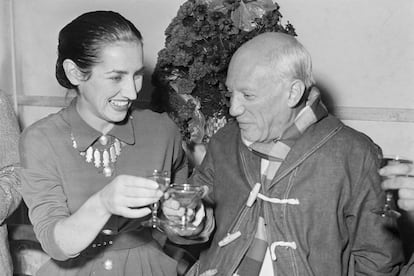
“Aside from Fernande Olivier, Gilot is the only woman who didn’t let Picasso break her, and I don’t think that’s a coincidence. Fernande also wrote memoirs of her [life] with Picasso. He did not destroy her, but he didn’t do anything to save her either, and she died in poverty,” says Annie Maïllis, Gilot’s biographer and friend. Maïllis also directed the documentary La femme qui dit non [The woman who said no], which returns to the screen this week for the 50th anniversary of Picasso’s death.
Françoise Gilot met Picasso in wartime Paris during the Nazi occupation. At the time, she was an aspiring young artist. As she recounts in her controversial book Living with Picasso, which she wrote in 1964 with literary critic Carlton Lake, they first crossed paths at the Le Catalan restaurant, a meeting spot for artists. “I was with a friend and actor Alain Cuny, who was dining with us. Picasso came over to talk to us and told Cuny that he knew him: Can you introduce me to your friends?” Gilot answered fearlessly, explaining that she was an artist. From then on, at Picasso’s invitation, she began to visit him in his studio in Grands Augustins in the morning. “The day he invited me to come in the afternoon, I understood very well what he meant,” Gilot says in Maïllis’s book of interviews with Picasso Dans l’arène avec Picasso [In the Ring with Picasso], which was published again in 2021. That was in May 1943; Picasso was 61 and Gilot was 21.
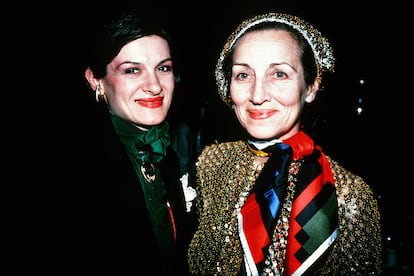
Soon, Gilot and Picasso fell in love. In her book, Gilot recalled the first months of their relationship. At the time, Picasso was involved with Dora Maar, with whom he had previously cheated on Marie-Thérèse de Walter. De Walter never got over the traumas of their relationship, and in 1977, four years after Picasso’s death, she committed suicide. For her part, Maar ended up in a psychiatric hospital. Meanwhile, Picasso could never legally separate from his first wife, Russian ballerina Olga Jojlova, who died in 1955 of cancer without being granted a divorce. Picasso, with whom she had a son, did not bother to attend her funeral.
Picasso’s control over his friends and lovers has been a source of controversy and the focus of several books such as Sophie Chauveau’s The Minotaur and his granddaughter Marina Picasso’s My Grandfather. In the 1960s, Gilot’s book spoke to what it was like to have to tolerate the great artist every day. Jean Cocteau—one of the few people who remained loyal to Gilot after she left Picasso and the painter’s friends and art galleries had begun to shun Gilot—also mentioned it in his memoirs. Cocteau was in the Spaniard’s studio when he heard the artist say to his partner: “You are nothing more to me than the dust on this staircase.” Gilot pointedly retorted, “I don’t need to be swept away; I’ll be gone before that.” That’s just one of many anecdotes about the Spanish artist that reflect a man who was extremely indecisive about the most trivial matters and was possessed of a mercurial temperament (to say the least).
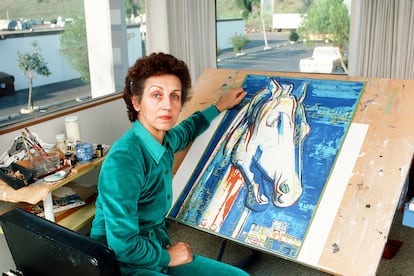
“Picasso’s [modus operandi] was mostly psychological torture. He was not a violent man or a predator as we would say now. He continually put both the men and women he trusted to the test. But she was strong enough to respond. Others were not,” says Maïllis. As with Fernande, another free-spirited woman, Picasso was deeply in love with Françoise, and he could not bear that she left him. The trauma of abandonment, which he had carried with him since childhood, resurfaced in 1954 when Françoise took their two young children and moved out of the house they shared in the south of France.
“I think what fascinated Picasso about Françoise was precisely [the fact] that she was a strong woman. It took a lot of character to leave Picasso. He told Gilot that no one could leave him, and that was exactly the wrong thing to say to her, because it immediately increased her desire to leave him,” says Maïllis, who has been close with Gilot and her children for 30 years; she has also spoken with them at length about Picasso.
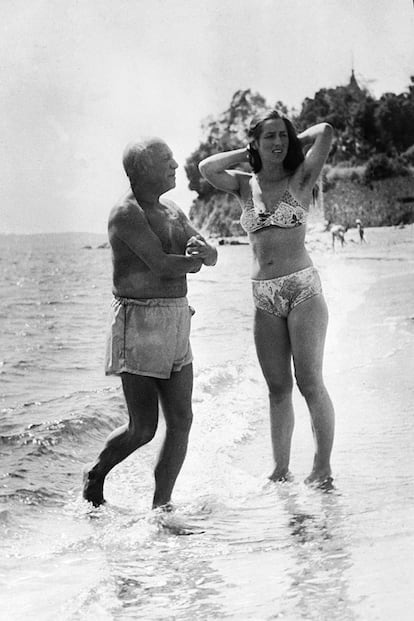
Undoubtedly, Gilot got the worst of it after she separated from the artist, with whom she had established an interesting sort of painting collaboration during their relationship. Unlike Picasso’s previous partners, Gilot refused to become a muse. She did not want to be “the creation” in one of his works; she wanted to be “the creator” and often painted him. After they separated, Gilot began to have problems with her gallery owners, especially because she married another man and had another daughter. But her book’s publication in 1964 also fueled her banishment to a certain extent. Picasso tried three times to thwart its publication. Dozens of artists—including Rafael Alberti, José Bergamín, Camilo José Cela, Michel Leiris and other stalwarts of freedom of expression—produced a petition calling for the book to be banned in France. Those efforts failed, but Gilot was forced to start a new life. In 2019, during an exhibition dedicated to her in New York, the painter insisted that she could not live in France: “People don’t like me; you can’t imagine how much they hate me.” Gilot never spoke to any of them again, although some tried to apologize later.
But the institutional vacuum around Gilot’s art in France has persisted until this very decade, although her paintings sell in the United States and other countries for hundreds of thousands of dollars. “The motivation for our exhibit was the art world’s injustice toward women, particularly in Françoise Gilot’s case,” explains Elisa Farran, the director of the Estrine Museum in Saint-Rémy-de-Provence. In 2021, Farran’s museum hosted the first exhibit of Gilot’s work, which was curated by Maïllis. The exhibition was well received; over 20,000 visitors went to see it in the six months that it was open to the public. Maïllis says that she has been contacted recently about a possible exhibit in Spain and a retrospective in a major city, which have yet to be confirmed.
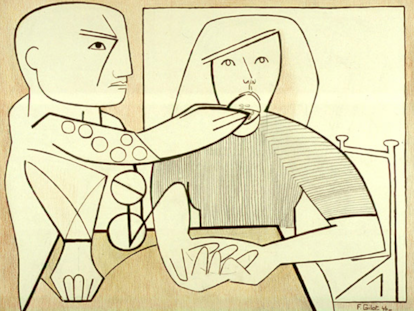
Farran herself was surprised that she didn’t know of Gilot, whose name did not even appear among the names of the last century’s great French artists. The museum director noted that there was a redemptive aspect to trying to bring the public closer to Gilot’s work. “For me, the important thing was to emphasize that we are talking about a French artist, given that France has always blacklisted her and excluded her as if she were an undesirable. But we had to show the extent to which Gilot, who trained in France, retained the characteristics of a French and European painter long after she settled in the United States.”
The exhibit and its companion book are both called The French Years to reflect Gilot’s work in her post-Picasso figuration in the 1940s, her path toward the abstract, the weight of color—which she learned from Matisse, her favorite painter—and the strength of her drawings. “When Gilot met Picasso she was already an artist who had a certain mastery. The construction of her works is very solid because of the strength of her drawings. She had fun portraying her children and responding to her life as [part of] a couple. She cannot be compared to Picasso, but it must be said that she was not merely an executing hand; she was an artist of great talent.”
In addition to her own work, Gilot is an extraordinary witness to the 20th century’s artistic circles, but she was unable to attend her first exhibit in France. At 101 years old, she does not leave New York, although she has full control of her mental faculties. In the latter part of her life, she has maintained strict privacy and inaccessibility; she no longer wants to give interviews or be disturbed. But at least she has been able to witness her native country slowly redevelop interest in her work.
Sign up for our weekly newsletter to get more English-language news coverage from EL PAÍS USA Edition
Tu suscripción se está usando en otro dispositivo
¿Quieres añadir otro usuario a tu suscripción?
Si continúas leyendo en este dispositivo, no se podrá leer en el otro.
FlechaTu suscripción se está usando en otro dispositivo y solo puedes acceder a EL PAÍS desde un dispositivo a la vez.
Si quieres compartir tu cuenta, cambia tu suscripción a la modalidad Premium, así podrás añadir otro usuario. Cada uno accederá con su propia cuenta de email, lo que os permitirá personalizar vuestra experiencia en EL PAÍS.
¿Tienes una suscripción de empresa? Accede aquí para contratar más cuentas.
En el caso de no saber quién está usando tu cuenta, te recomendamos cambiar tu contraseña aquí.
Si decides continuar compartiendo tu cuenta, este mensaje se mostrará en tu dispositivo y en el de la otra persona que está usando tu cuenta de forma indefinida, afectando a tu experiencia de lectura. Puedes consultar aquí los términos y condiciones de la suscripción digital.
More information
Archived In
Últimas noticias
Petro claims the ELN was the target of US attack in Venezuela
Maduro counterattacks Trump with rhetoric and announces downing of nine drug trafficking aircraft
‘Ecce Homo’: The miraculous disaster that made a small Spanish town famous
Return to sex testing at the Olympics: IOC edges closer to banning transgender women
Most viewed
- Sinaloa Cartel war is taking its toll on Los Chapitos
- Oona Chaplin: ‘I told James Cameron that I was living in a treehouse and starting a permaculture project with a friend’
- Reinhard Genzel, Nobel laureate in physics: ‘One-minute videos will never give you the truth’
- Why the price of coffee has skyrocketed: from Brazilian plantations to specialty coffee houses
- Silver prices are going crazy: This is what’s fueling the rally










































